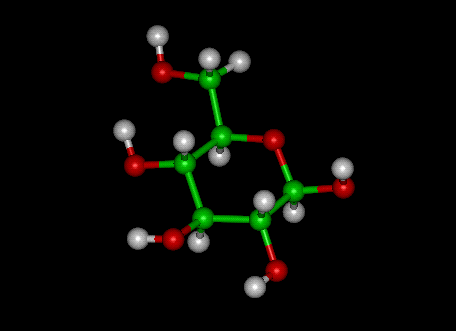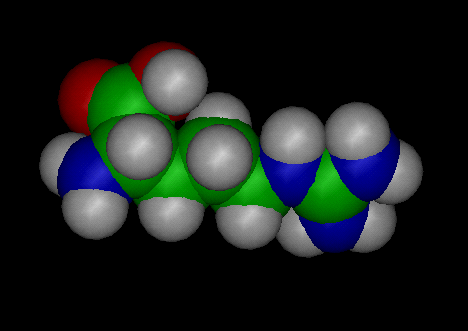
Chemistry 2.236 /
Microbiology 60.236
Biochemistry I: Biomolecules and an Introduction to Metabolism
002.236 Biochemistry I: Biomolecules and an Introduction to Metabolism
(3)L An introductory course dealing with the kinds of molecules encountered in biochemistry, and the concept of metabolic energy as a product of catabolism and a requirement for biosynthesis.
This course is also given in the Department of Microbiology as 060.236. Not to be held with 002.277 (or the former 002.240), or 060.236, or 060.277, (or the former 060.240), or the former 002.235 or 060.235. Prerequisites: 002.131 (or the former or 002.128) and 071.125, both courses with a minimum grade of "C".
NOTE: Students may hold this course for credit in the B.Sc. General degree program, but may not use it to fulfill the minimum requirement of 12 credit hours in 200 level Chemistry.
Course Outline - 2005
Instructors:
- Dr. H. Duckworth - Slot 04
- Room 531 Parker Building
- Telephone: 474-6252
- Office Hours: TBA
- E-mail: hdckwth@cc.umanitoba.ca
- Dr. Brian Mark - Slot 09
- Room 420 Buller Building
- Telephone: 480-1430
- Office Hours: TBA
- E-mail: brian_mark@umanitoba.ca
- Dr. A. Scoot - Lab Slots 22, 23, 24, 25, 27
- Room 404 Parker Building (Chemistry)
- Telephone: 474-7415
- Office Hours: TBA
- E-mail: ascoot@ms.UManitoba.CA
Lectures:
- Slot 4 L01
- Tues. & Thurs. 8:30-9:45
AM
- 208 Armes
- Slot 9 L02
- Tues. & Thurs. 11:30-12:45
- 200 Armes
Laboratories:
Textbook:
- "Lehninger Principles of Biochemistry"
by: Nelson, D. L. and Cox, M. M. 2004, 4th edition; Worth Publishers.
Available in the Bookstore.
-
Laboratory Manual, 2005-2006
Available in the Bookstore.
On-line Lecture Notes:
Evaluation:
- Mid-term Test - Mon. Oct. 24, 6-8 PM
----------------- 25%
- Final Exam - Scheduled by
Student Records
---------- 60%
- Laboratory
---------------------------------------------------- 15%
Note: You must obtain a grade of 8 (out of 15) in the laboratory to pass the course.
Exam Format
- The midterm exam will be short answer questions covering lecture material but not laboratory material.
- The final exam will be short answer questions with 25% of the material focused on the laboratory.
- Copies of midterm and final examinations are included in the laboratory manual and are available from the Science Students' Association:
Online Examinations, and at Old Examinations, and below.
Working through them will help prepare you for the examinations.
Lab Exemptions:
If you have taken the course within the last two years and obtained a grade of 10 out of 15 on the laboratory reports you are eligible for a lab exemption when repeating the course for the first time. The lab mark will be carried over. For all subsequent attampts the lab must also be repeated. See the staff in the Chemistry General Office, 350 Parker, to obtain a lab exemption. You are still responsible for the lab material on the final exam even if you have a deferral.
Academic Dishonesty:
Academic dishonesty, such as cheating in examinations and plagiarism of laboratory reports, can result in serious penalties up to and including expulsion from the University. Don't put yourself at risk -- maintain your integrity!
alpha-D-Glucopyranose

Lecture Schedule
BACKGROUND (1 Lecture)
Students should read Chapters 1, 2, and 3, which provide:
overview of the biochemical approach
review of cell structure
review of some basic chemical principles
WATER (Chapter 4) (1 Lecture)
properties
interactions with solutes
hydrophobic effect
ionization, acids and bases
pH and buffers
AMINO ACIDS/PEPTIDES (Chapter 5) (2 Lectures)
structure and stereochemistry
acid/base behaviour
selected properties and reactions
peptides
PROTEINS (Chapter 6) (3 Lectures)
levels of structure
peptide bond and secondary structure
fibrous proteins (focus on keratin and fibroin)
tertiary structure
quaternary structure
If time permits, there will be a brief class treatment of protein separation,
purification and sequencing.
ENZYMES (Chapter 8) (4 Lectures)
nomenclature
how enzymes work
simple Michaelis Menten (M-M) kinetics
meaning of Km, Vmax, kcat, etc.
inhibitors (M-M)
chymotrypsin as an example
regulatory enzymes - allosteric kinetics - metabolic examples later. (Covalent modification details later - phosphorylase etc.)
CARBOHYDRATES (Chapter 9) (2 Lectures)
monosaccharides - structure and stereochemistry
hemiacetals and hemiketals, mutarotation
derivatives, including disaccharides
polysaccharides - we will not do bacterial cell walls
glycoproteins and glycolipids
NUCLEOTIDES AND NUCLEIC ACIDS (Chapter 10) (2 Lectures)
We will follow Lehninger generally but omit the advanced material -
palindromes, mirror repeats etc.
We will deal with ribosomal and transfer RNA structures later.
LIPIDS & MEMBRANES (Chapters 11 & 12) (3 Lectures)
basic structures and physico-chemical properties (including terpenes/sterols)
very brief treatment of isolation and purification
brief treatment of membrane structure and function
THERMODYNAMICS, BIOENERGETICS AND CATABOLISM
A. Principles (Chapter 14) (3 Lectures)
general introduction
DG0, D Grxn; relationship to Keq
redox reactions and reduction potentials, structures and function and NAD+ and FAD/FMN
summary of G0 determination - from Keq, E0, summation of partial reactions
ATP and other "high-energy" compounds - structures, reasons for large G0- phosphate transfer potential
thermodynamics of energy conservation as exemplified by Ga-3-P oxidation (detailed exposition)
B. Energy and Oxidation Pathways (A brief overview of Chapters 15, 16, 19.) (4 Lectures)
fermentations (internal redox)
respirations (exogenous, usually inorganic, electron acceptor)
anaerobic generation of ATP -- glycolysis in principle, emphasizing energetics
aerobic generation of ATP -- carbohydrates, fats and amino acids as sources of acetyl-S-CoA, TCA cycle, collection of electrons as NADH/FADH2, concept and energetics of electron transport, use of released energy to synthesize ATP via oxidative phosphorylation, energetic summary calculations
Total: 25 Lectures
Arginine

Useful WWW Sites for Chemistry 002.236:
On-line Medical Dictionary
On-line Webster Dictionary
Metabolic Pathways of Biochemistry
Detailed Functional Overview of Metabolic Pathways
The Main Metabolic Pathways on Internet
Cells Alive!
The Human Transcript Map
Material Safety Data Sheets
Textbook Publisher Site
Textbook Publisher Site
Return to the Chemistry Department Course Descriptions
Return to Joe O'Neil's Home Page
http://home.cc.umanitoba.ca/~joneil/2.236.Course.outline.htm
Maintained by J. O'Neil

Free JavaScripts provided
by The JavaScript Source





